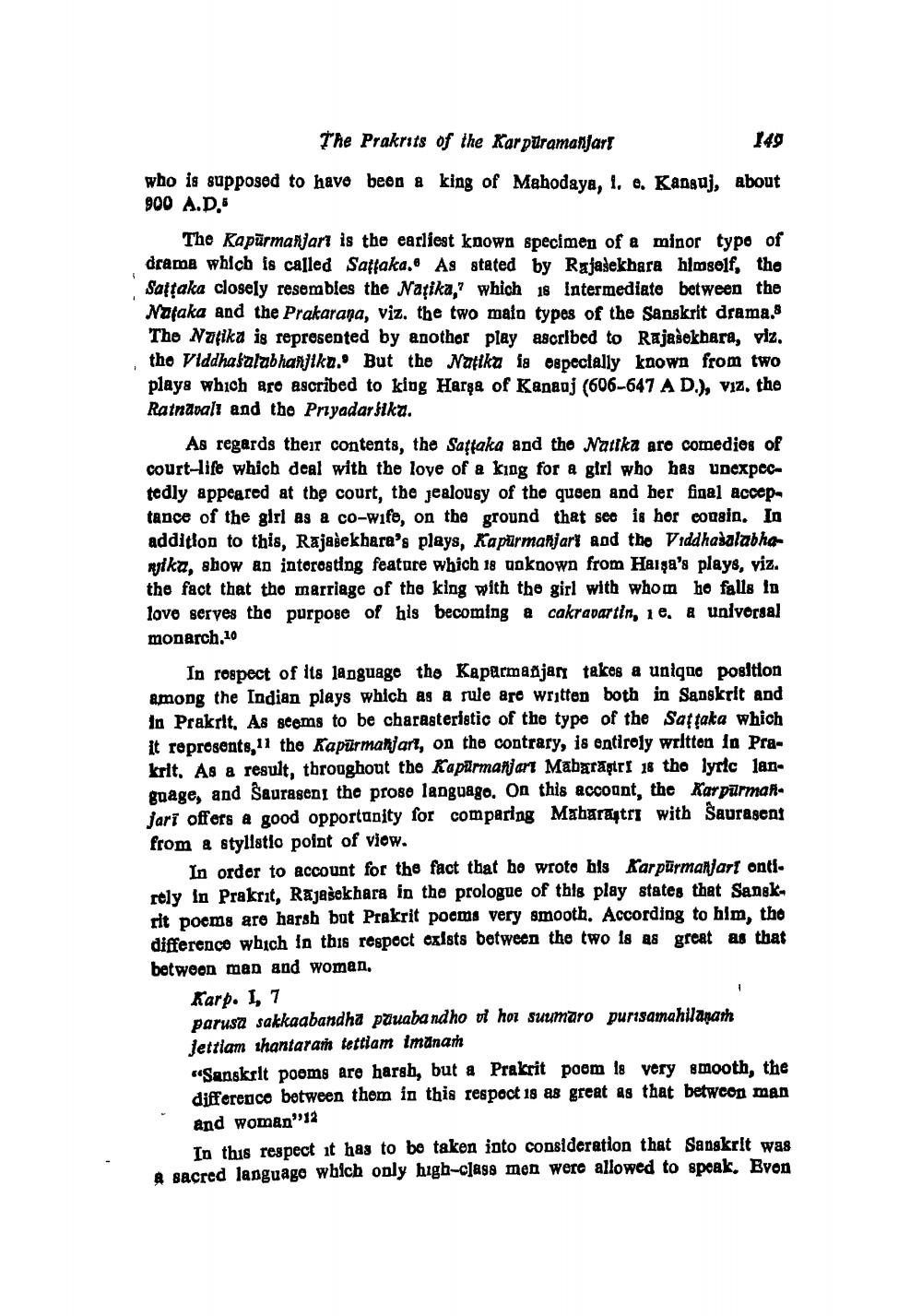________________
The Prakrits of the Karpuramaħjart
149
who is supposed to have been a king of Mahodaya, 1. e. Kansuj, about 900 A.D.
The Kapurmanjart is the earliest known specimen of a minor type of drama which is called Sattaka. As stated by Rajasekhara himself, the Saṭṭaka closely resembles the Națika," which is intermediate between the Nataka and the Prakarana, viz. the two main types of the Sanskrit drama.s The Nutika is represented by another play ascribed to Rajasekhara, viz. the Viddhakalabhanjika. But the Natika is especially known from two plays which are ascribed to king Harga of Kanauj (606–647 A D.), viz. the Ratnaval and the Priyadarsiku.
As regards their contents, the Sattaka and the Nattka are comedies of court-life which deal with the love of a king for a girl who has unexpectedly appeared at the court, the jealousy of the queen and her final acceptance of the girl as a co-wife, on the ground that see is her cousin. In addition to this, Rajasekhara's plays, Kapurmanjart and the Viddhasalabha njika, show an interesting feature which 18 unknown from Haisa's plays, viz. the fact that the marriage of the king with the girl with whom he falls in love serves the purpose of his becoming a cakravartin, 1 e. a universal monarch.10
In respect of its language the Kaparmanjary takes a unique position among the Indian plays which as a rule are written both in Sanskrit and in Prakrit. As seems to be charasteristic of the type of the Saṭṭaka which It represents,11 the Kapurmanjart, on the contrary, is entirely written in Prakrit. As a result, throughout the Kapurmanjart Mabaraştri 18 the lyric language, and Saurasent the prose language. On this account, the Karpurmanjari offers a good opportunity for comparing Maharastry with Saurasent from a stylistic point of view.
In order to account for the fact that he wrote his Karpürmanjari ontirely in Prakrit, Rajasekhara in the prologue of this play states that Sanskrit poems are harsh but Prakrit poems very smooth. According to him, the difference which in this respect exists between the two is as great as that between man and woman,
Karp. 1, 7
parusa sakkaabandha pauabandho vt hor suumaro purisamahilaṇam Jettiam shantaram tettiam imanaṁ
"Sanskrit poems are harsh, but a Prakrit poem is very smooth, the difference between them in this respect is as great as that between man and woman"12
In this respect it has to be taken into consideration that Sanskrit was a sacred language which only high-class men were allowed to speak. Even




